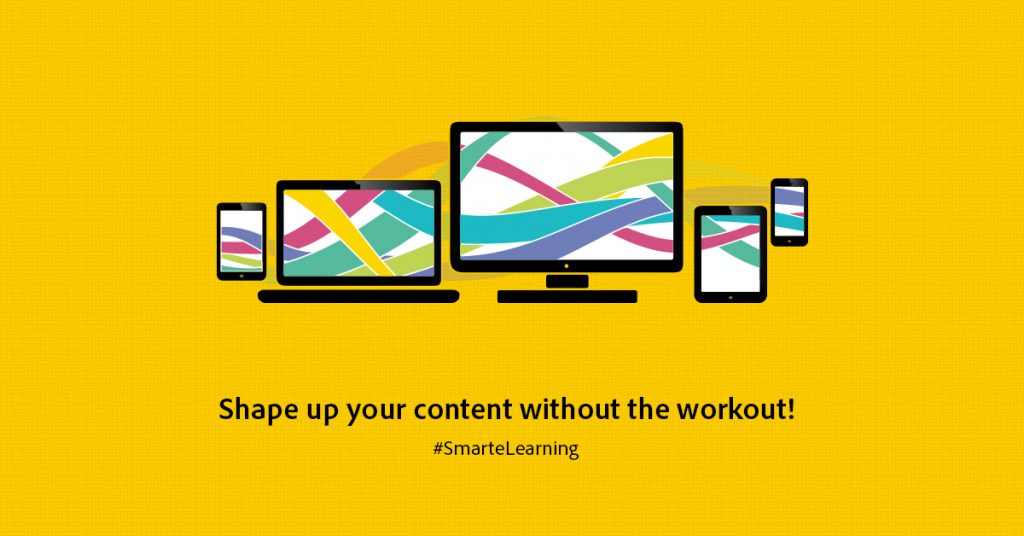
“We are a nation of multi-screeners.” – ‘The New Multi-Screen World Study’, 2012
What Google learned about American consumers in 2012 is true for most of the connected world today.1 Computer, smartphone, tablet, or TV – we’re spending a lot of time in front of one or more screens and we regularly switch devices. What this means is that the learner who starts a course on a desktop, may well leave midway, resume on a tablet, and finish on a smartphone….or the other way around. This leaves eLearning authors and developers with an unenviable task – that of creating content that runs perfectly and looks optimal on every single device out there.
Enter Responsive eLearning Design.
Responsive design is an approach whereby content responds to the size and orientation of the screen on which it is being viewed. Manually, it is nearly impossible to anticipate and design for every possible screen size. The only feasible approach is to use a smart authoring tool that automatically aligns the content to any digital screen, so that the content displays optimally by intelligently adjusting for the white space. Different authoring platforms provide this responsiveness with varying degrees of finesse and design control.
The 2017 release of Adobe Captivate is a smart eLearning authoring platform that helps you create fully responsive content without programming – so that you can deliver great learning experiences consistently to learners, across devices and browsers. The combination of sophisticated authoring capabilities with an easy-to-use interface makes it a joy to design responsive content.
_______________________________________________________________________
¹ The New Multi-screen World: Understanding Cross-platform Consumer Behavior
https://ssl.gstatic.com/think/docs/the-new-multi-screen-world-study_research-studies.pdf

“We are a nation of multi-screeners.” – ‘The New Multi-Screen World Study’, 2012
What Google learned about American consumers in 2012 is true for most of the connected world today.1 Computer, smartphone, tablet, or TV – we’re spending a lot of time in front of one or more screens and we regularly switch devices. What this means is that the learner who starts a course on a desktop, may well leave midway, resume on a tablet, and finish on a smartphone….or the other way around. This leaves eLearning authors and developers with an unenviable task – that of creating content that runs perfectly and looks optimal on every single device out there.
Enter Responsive eLearning Design.
Responsive design is an approach whereby content responds to the size and orientation of the screen on which it is being viewed. Manually, it is nearly impossible to anticipate and design for every possible screen size. The only feasible approach is to use a smart authoring tool that automatically aligns the content to any digital screen, so that the content displays optimally by intelligently adjusting for the white space. Different authoring platforms provide this responsiveness with varying degrees of finesse and design control.
The 2017 release of Adobe Captivate is a smart eLearning authoring platform that helps you create fully responsive content without programming – so that you can deliver great learning experiences consistently to learners, across devices and browsers. The combination of sophisticated authoring capabilities with an easy-to-use interface makes it a joy to design responsive content.
_______________________________________________________________________
¹ The New Multi-screen World: Understanding Cross-platform Consumer Behavior
https://ssl.gstatic.com/think/docs/the-new-multi-screen-world-study_research-studies.pdf
You must be logged in to post a comment.
- Most Recent
- Most Relevant






